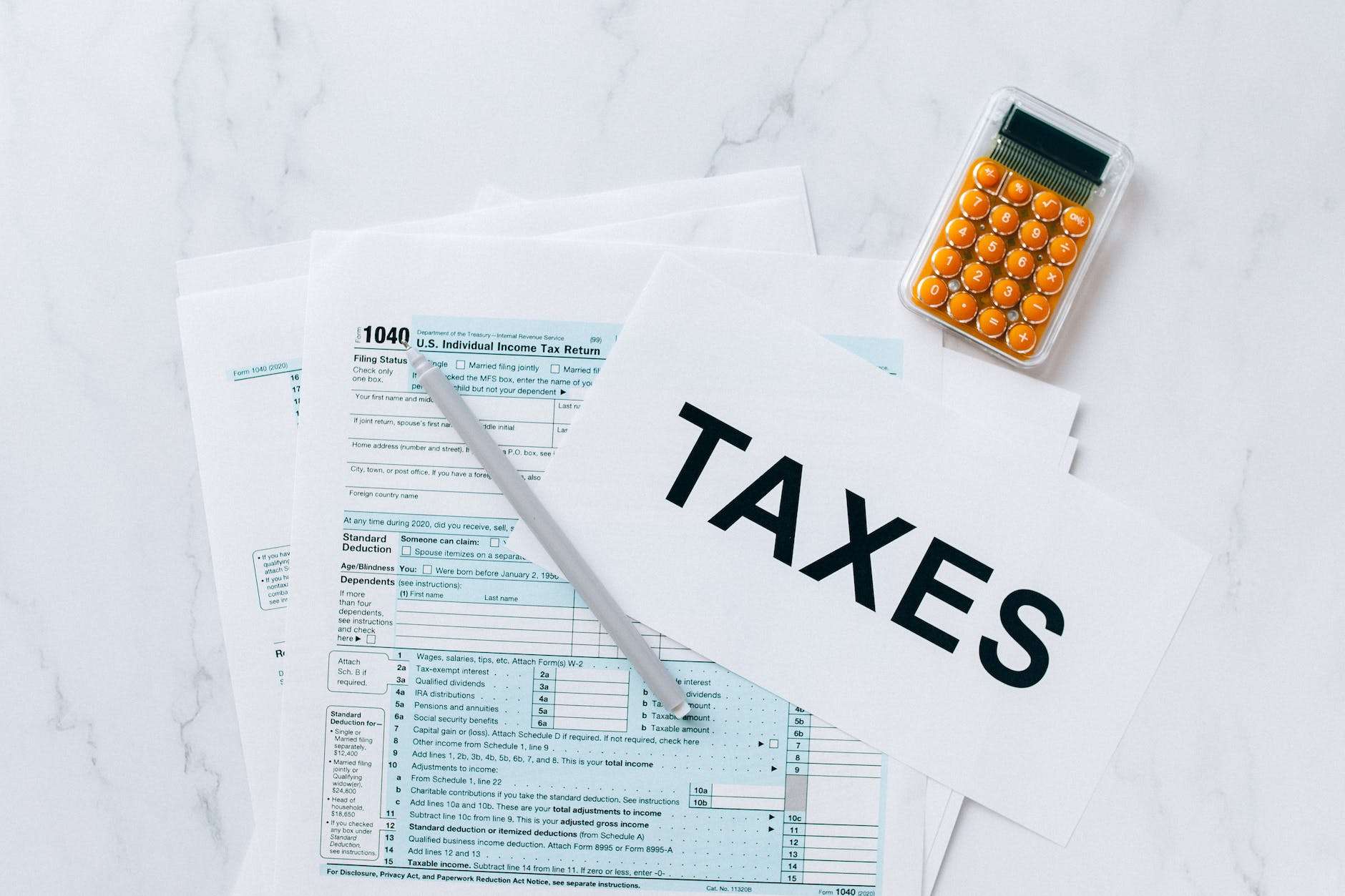As a homeowner you know that owning a home comes with its own set of expenses from monthly mortgage payments to routine maintenance costs. However, did you know that there are tax benefits available to homeowners as well? One of these benefits is the homeowner tax rebate credit.
What is the homeowner tax rebate credit?

The federal government provides qualifying homeowners with the homeowner tax rebate credit as a tax credit to help them with the expenditures associated with owning and maintaining a house. This tax credit is also known as the “residential energy credit” or the “energy-efficient home improvement credit”. It is designed to encourage homeowners to make energy-efficient improvements to their homes.
Who is eligible for the homeowner tax rebate credit?
To be eligible for the homeowner tax rebate credit, you must meet certain criteria, which include:
- You must own the home that you are claiming the credit for.
- The home must be your primary residence.
- The improvements made to the home must meet certain energy-efficient requirements set by the federal government.
- The improvements must be made between January 1, 2021 and December 31, 2022.
How much can you get from the homeowner tax rebate credit?
The amount you can get from the homeowner tax rebate credit depends on the cost of the energy-efficient improvements made to your home. The credit is equal to 10% of the cost of the improvements up to the maximum of $500.We will go through some of the exceptions to this restriction later in this article.
What is the deadline for claiming the homeowner tax rebate credit?
The deadline for claiming the homeowner tax rebate credit is April 15th of the year following the year in which the improvements were made. For example, if you made improvements to your home in 2021, you must claim the credit on your 2022 tax return, which is due by April 15th, 2023.
How to claim the homeowner tax rebate credit?
To claim the homeowner tax rebate credit, you must complete IRS Form 5695 and attach it to your tax return. This form is designed to help you in determining the credit amount for which you are qualified and will also ask you for details on the energy-saving modifications you have made to your house.
What documents do you need to claim the homeowner tax rebate credit?
To claim the homeowner tax rebate credit, you will need to provide the following documents:
- Receipts for the energy-efficient improvements made to your home, such as windows, doors, insulation and HVAC systems.
- Manufacturer’s certification statement for the energy-efficient improvements made to your home, which can be found on the product packaging or on the manufacturer’s website.
- Proof of payment for the energy-efficient improvements made to your home, such as cancelled checks or credit card statements.
It is important to keep these documents safe and organized in case of an audit by the IRS.
How long does it take to get the homeowner tax rebate credit?
The time it takes to get the homeowner tax rebate credit depends on several factors, including the processing time of the IRS and the accuracy of your tax return. Generally it takes between 6 to 8 weeks to receive the tax refund, but it could take longer period if there are some errors or omissions in your tax return.
What happens if you sell your home after claiming the homeowner tax rebate credit?
You could have to pay back a portion of the homeowner tax rebate credit if you sell your house after claiming it. The amount you must pay back is based on a number of variables, including the credit amount, the date renovations were completed and the date your house is sold. For advice on this subject, it is crucial to speak with a tax expert or the IRS.
Can you claim the homeowner tax rebate credit multiple times?
Yes, you can claim the homeowner tax rebate credit multiple times, but the total credit amount you can claim is limited to $500. Which means that you won’t be entitled to claim the credit again if you previously claimed the entire amount of the credit on a tax return?
How to maximize your homeowner tax rebate credit?
To maximize your homeowner tax rebate credit, you should consider making energy-efficient improvements to your home that qualifies for the credit. Some examples of energy-efficient improvements that may qualify for the credit include:
- Installing energy-efficient windows and doors
- Upgrading to an energy-efficient HVAC system
- Installing a solar panel system
- Upgrading to an energy-efficient water heater
It is important to note that not all energy-efficient improvements qualify for the credit, so it is best to consult with a tax professional or the IRS to determine which improvements qualify.
How does the homeowner tax rebate credit differ from other tax benefits for homeowners?
The homeowner tax rebate credit differs from other tax benefits for homeowners, such as the mortgage interest deduction and the property tax deduction, in that it is specifically designed to encourage energy-efficient improvements to homes. These other tax benefits are more general and apply to all homeowners.
What are the pros and cons of claiming the homeowner tax rebate credit?
Pros of claiming the homeowner tax rebate credit include:
- Lowering your tax bill: The credit can help lower your tax bill and offset the costs of making energy-efficient improvements to your home.
- Energy savings: Making energy-efficient improvements to your home can help reduce your energy bills and save you money in the long run.
Cons of claiming the homeowner tax rebate credit include:
- Limited credit amount: The credit is limited to $500, which may not be enough to cover all of the costs of energy-efficient improvements.
- Qualification requirements: Not all energy-efficient improvements qualify for the credit, so it is important to do your research before making any improvements.
What are some common mistakes to avoid when claiming the homeowner tax rebate credit?
Some common mistakes to avoid when claiming the homeowner tax rebate credit include:
- Not keeping proper documentation: It is important to keep all of the necessary documentation, such as receipts and manufacturer’s certification statements, to support your claim for the credit.
- Claiming ineligible improvements: Not all energy-efficient improvements qualify for the credit, so it is important to check the eligibility requirements before making any improvements.
- Claiming the credit for rental properties: The homeowner tax rebate credit is only available for improvements made to your primary residence, so you cannot claim the credit for improvements made to rental properties or vacation homes.
Conclusion
The homeowner tax rebate credit is a valuable tax benefit for homeowners who make energy-efficient improvements to their homes. By making these improvements, homeowners can not only reduce their energy bills and improve the comfort of their homes but also lower their tax bills and receive a credit from the government. To take advantage of this credit, it is important to do your research, keep proper documentation and consult with a tax professional or the IRS if you have any questions or concerns.
Frequently Asked Questions
1. What is the deadline to claim the homeowner tax rebate credit?
There is no deadline to claim the homeowner tax rebate credit, but the credit is only available for improvements made between January 1, 2006, and December 31, 2021.
2. How much money can you save by claiming the homeowner tax rebate credit?
The amount of money you can save by claiming the homeowner tax rebate credit depends on the cost of the energy-efficient improvements you make and the amount of the credit you are eligible to receive.
3. Can you claim the homeowner tax rebate credit if you use tax preparation software?
Yes, if you use tax preparation software, you can claim the homeowner tax rebate credit, but you must make sure that the program is current and incorporates the benefits in its calculations.
4. What happens if you make energy-efficient improvements to your home after December 31, 2021?
If you make energy-efficient improvements to your home after December 31, 2021, you will not be eligible to claim the homeowner tax rebate credit.
5. Can you claim the homeowner tax rebate credit if you are already receiving other energy-related tax benefits?
Yes, you can claim the homeowner tax rebate credit if you are already receiving other energy-related tax benefits, but the total credit amount you can claim is limited to $500.



